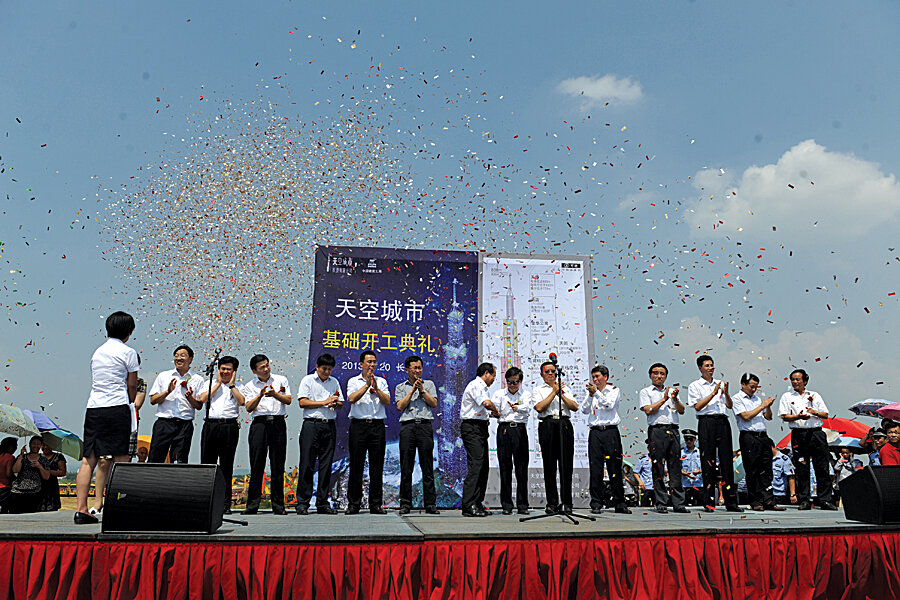China's building debate: How high is too high?
Loading...
| Beijing
Look out of any window in any city in China, and chances are you will see a crane.
Even as China's economic growth slows, the country's builders are still hard at work. And although they are mostly putting up garden-variety 30-story apartment and office blocks, they are also indulging a national passion for really tall skyscrapers.
Just last weekend, construction workers "topped out" the Shanghai Tower, finishing the second tallest building in the world. Throughout the country, 269 buildings more than 650 feet tall are going up at the moment.
That compares with just eight such buildings currently under construction in the United States, according to the Chicago-based Council on Tall Buildings and Urban Habitat (CTBUH), the global arbiter of all skyscraper-related questions.
Chinese architects, and especially Chinese government officials, are in love with skyscrapers.
"If you are a successful [provincial] governor or [city] mayor, you look for something that shows you are successful," says Mao Qizhi, deputy dean of the school of architecture at Tsinghua University in Beijing. "They find that the best sign is a skyscraper, and the taller the better."
The image-enhancing effects of skyscrapers can be good for a city's growth, adds Wu Chengtao, an analyst at Motian City, a business consultancy specializing in property.
"Ambitious local governments need skyscrapers as decorations for their business districts because they boost confidence in their economic future," Mr. Wu explains.
The phenomenon may be gathering pace, but it is not new. As China raced to catch up with more developed countries in the 1980s and '90s, says Li Xiaodong, a prominent Beijing architect, "very tall buildings were symbols of the modern world in the Chinese mind. Skyscrapers became landmarks on the way to modernity."
If Sky City ever comes to fruition (see related story), Mr. Li adds, most Chinese would see it as a happy symbol of their country's resurgence.
"All Chinese share a desire to be the center of the world again," he says. "Having the tallest building in the world would be an iconic 'Yes, we are No. 1 again.' "
Given Chinese property developers' reputation for cutting corners to save money, some experts have reservations about the tall building boom here. Though building codes are strict, they are not always followed.
"When you are moving at breakneck speed on so many buildings at once, it is almost inevitable that eventually one of them will be unsafe in one way or another," says Daniel Safarik, editor of the CTBUH's magazine.
Last March, work stopped on a number of skyscrapers in the southern city of Shenzhen, including the 2,145-foot Ping An tower, amid concerns that the salinity of unauthorized sea sand being used to make concrete could damage the buildings' rebar underpinnings. The Ping An building, due to overtake Shanghai Tower and become the tallest building in China when it is completed next year, was eventually given permission to proceed.
That is not the sort of hiccup likely to deter ambitious local government officials from seeking a unique landmark to set their otherwise anonymous cities apart in the eyes of Beijing and potential investors.
"Very tall buildings still have a future in China because there are lots of cities with growth potential," says Regina Yang, head of China research for Knight Frank, a property consultancy. "There will be competition among them, and each of them thinks it should have one or two" skyscrapers as distinguishing landmarks.
Whether they will be allowed to have them, though, is coming into question, as new Chinese President Xi Jinping seeks to rein in official extravagance.
"Policies have changed," Ms. Yang says. "If a development is only for prestige purposes, it probably ought to be avoided."







